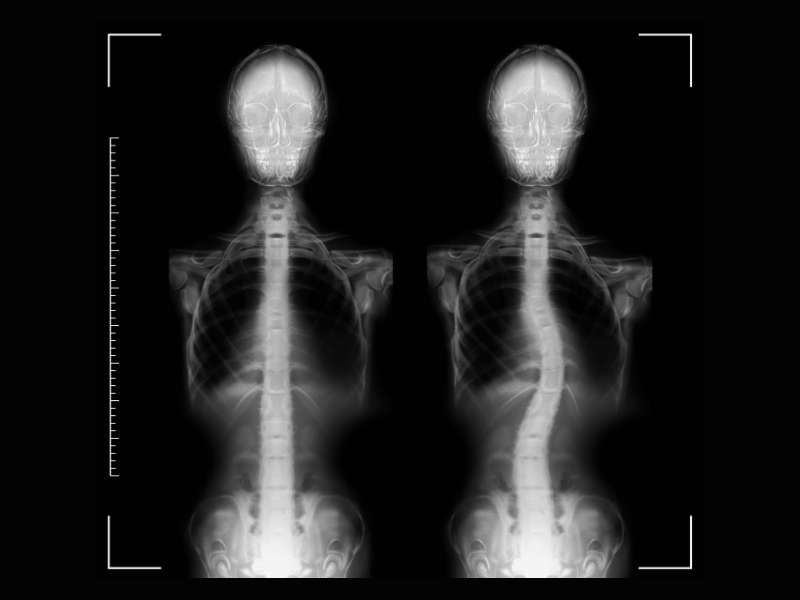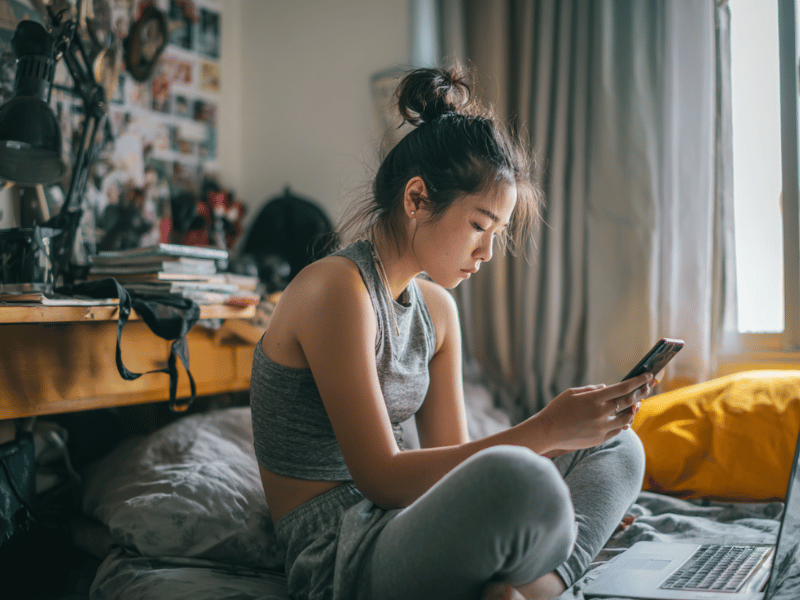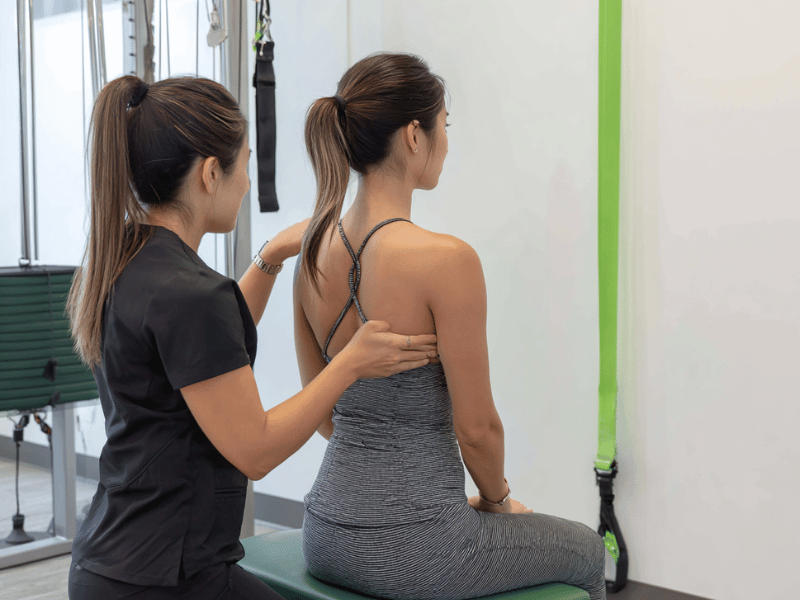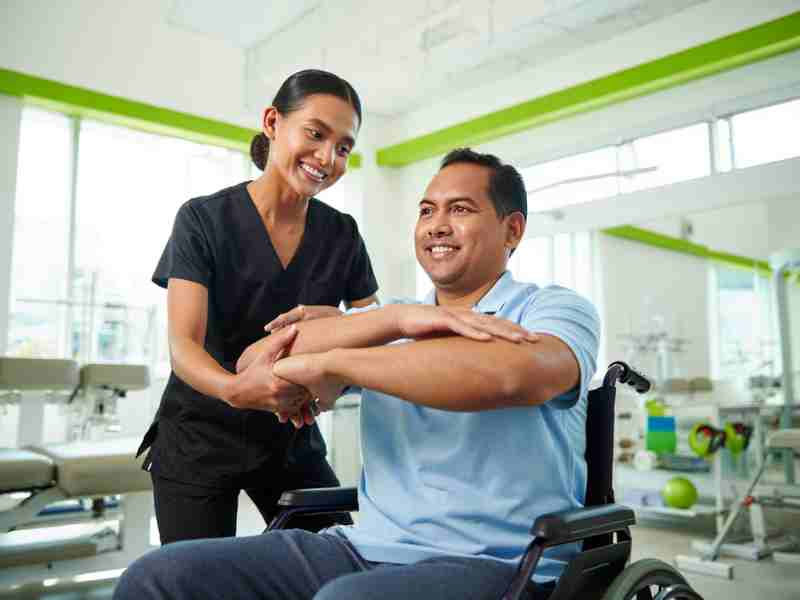Philippines Scoliosis Awareness Month: Why Early Detection and Expert Care Matter
- R C
- Jun 25
- 8 min read
Updated: Jun 25
Published in recognition of Philippines National Scoliosis Awareness Month - June 2025
Why This Month Matters for Filipino Spinal Health
The Department of Health estimates that about 3 million Filipinos across the Philippines are affected by scoliosis. And in 2018, through Proclamation No. 620, June was officially declared as the national "Scoliosis Awareness Month", recognizing that scoliosis affects a considerable portion of our population regardless of age, gender, race, religion, or socio-economic status.

But here's what most families don't know: scoliosis doesn't just affect young kids or teenagers. Worldwide, about 3 out of every 100 people have some form of scoliosis.
Here at Activait, we see patients from age 8 to 80 seeking help for spinal curvature. From students with backpack-related posture issues to working professionals dealing with desk jobs, and active adults wanting to stay pain-free. But with proper physical therapy and rehabilitation, many people can manage their condition effectively and see improvements within just a few sessions.
What Exactly Is Scoliosis? (And Why It's More Common Than You Think)
Scoliosis is a condition where the spine curves sideways. Instead of growing in a straight line down the back, the spine may form an "S", "C", or "Z" shape.
Think of it like this: if you looked at a healthy spine from behind, it should appear perfectly straight. With scoliosis, you'd see a noticeable curve to one side.

The Numbers That Matter
About 3 million Filipinos are estimated to be affected by scoliosis
Girls are affected more frequently: About 2-3 girls for every 1 boy have scoliosis
In severe cases (curves over 40°), girls outnumber boys 7 to 1
80% of scoliosis is idiopathic (meaning we don't know the exact cause)
The Early Warning Signs You Should Know

In Children and Teens (Parents, Look For These)
Visual clues that are easy to spot:
One shoulder sitting higher than the other
Uneven waistline or hip height
Clothes hanging crooked despite proper fit
Head not centered over the body
One shoulder blade sticking out more
Scoliosis doesn't only affect children. According to DOH medical officer Dr. Myrielle Marie Madayag, improper posture during excessive use of cellular phones or gadgets is one of the contributing factors that should be avoided.
Adult scoliosis can result from:
Undiagnosed adolescent curves that progress over time
Degenerative changes as we age
Poor posture habits from gadget use and desk work
Work-related factors like prolonged sitting or heavy lifting
Lifestyle changes including pregnancy, weight changes, or decreased activity
In Adults (Don't Ignore These Signs)
Persistent back pain that seems to worsen over time
Fatigue after standing or walking for normal periods
Clothes fitting differently than they used to
Breathing difficulties during exercise
Balance issues or feeling "off-center"
Early detection is crucial for the best treatment outcomes. Many patients find their way to Activait through referrals from their doctors or by booking a medical consultation at one of our clinics for comprehensive scoliosis assessment and treatment.
Whether you need initial screening, a second opinion, or specialized physical therapy care, Activait helps patients of all ages manage their condition effectively.
How We Approach Scoliosis at Activait
The Philippine Physical Therapy Association (PPTA) recognizes the importance of physical therapy in scoliosis management. At Activait, we believe in proactive, evidence-based care that addresses not just the curve, but how your whole body moves and functions. And our patients typically see improvements within just a couple of sessions.

Step 1: Movement Analysis
Using methods developed for elite athletes, we assess how your scoliosis affects your daily movement patterns. This isn't just about measuring the curve, it's about understanding how it impacts your daily life and work in Metro Manila.
Step 2: Functional Testing
We look at:
Core strength and stability
Postural control and balance
Breathing patterns and rib cage mobility
Pain levels and movement limitations
Step 3: Personalized Treatment Planning
Based on your specific curve pattern, lifestyle, and goals, we create a treatment plan that may include:
Targeted exercise protocols
Manual therapy techniques
Postural re-education
Activity modification strategies
Evidence-Based Treatment Options That Actually Work
Physiotherapy Scoliosis-Specific Exercises (PSSE)
Specialized exercise approaches can be highly effective to treat and manage scoliosis. Studies show that targeted physical therapy helps patients with all levels of scoliosis, from mild to severe curves. These approaches focus on:
3-dimensional self-correction techniques
Stabilization exercises
Neuromotor control training
Research has also shown that most patients see visible improvement in their spine curvature after completing a specialized exercise program, which typically includes between five and 20 sessions.
When Different Life Stages Require Different Approaches
Growing Children and Teens: Prevention is Key
For curves under 25 degrees in growing children, research shows that specific exercise programs can:
Slow or stop curve progression
Improve posture and core strength
Reduce the likelihood of needing bracing
Build confidence and body awareness

This is especially important in the Philippines where Dr. Madayag emphasizes that maintaining proper posture may help prevent scoliosis, particularly given our increasing use of gadgets and smartphones.
Adults: Focus on Function and Pain Management
Adult scoliosis treatment centers on:
Pain reduction through targeted interventions
Functional improvement for daily activities and work demands
Postural education to prevent further deterioration
Exercise programs that fit into busy Filipino lifestyles
Special Considerations for Different Life Stages
Working Professionals: Long hours at desks, carrying heavy bags, and stress can worsen existing curves or create new postural problems.
Parents and Caregivers: Lifting children, carrying groceries, and the physical demands of family life require special attention to spinal health.
Active Adults: Whether you're into basketball, running, or weekend hiking, maintaining spinal health is crucial for continued participation.
Pregnancy and New Mothers: Hormonal changes, weight shifts, and carrying babies can highlight existing curves or create new challenges requiring specialized care.
Your Treatment Options: Making the Right Choice
When it comes to scoliosis treatment, understanding your options helps you make informed decisions with your healthcare team.
When Physical Therapy is Most Effective
Research shows physical therapy works well for:
All curve severities and all ages - from mild childhood curves to adult degenerative changes
Growing children who want to avoid or delay bracing
Adults seeking pain relief and improved daily function
Post-surgical patients recovering from spinal fusion
Studies show that specialized scoliosis exercises can slow curve progression and significantly improve quality of life.
Comparing Your Treatment Choices

Observe & Wait
| Bracing
|
Surgery
| Physical Therapy (Our Specialty)
|
When to Seek Immediate Care
Contact a healthcare provider right away if you notice:
Rapid curve progression (more than 5 degrees in 6 months)
Severe back pain that interferes with sleep or daily activities
Breathing difficulties or chest pain
Neurological symptoms like numbness, weakness, or tingling
Significant balance problems or changes in walking
Why "Sports-Level" Care Makes a Difference
You don't have to be an athlete to benefit from athletic-level care. At Activait, we offer:

Precision Assessment
International standard tools adapted for the individual patients
Movement screening technology typically used for professional athletes
Detailed analysis of how scoliosis affects your specific daily activities
Evidence-Based Techniques
Manual therapy approaches used by sports physiotherapists
Performance optimization strategies adapted for daily Filipino life
Injury prevention protocols to protect your spine long-term
Quick Results
Improvements within a couple of sessions for most patients
Program adjustments as your needs change
Education so you become an expert in managing your condition

Real Results: What Our Patients Experience
Within a couple of sessions:
Noticeable pain reduction
Improved postural awareness
Better movement patterns
Enhanced confidence in daily activities
Within 1-3 months:
Significant functional improvements
Better exercise tolerance
Improved quality of life
Reduced reliance on pain medication
Long-term benefits:
Maintained functional improvements
Successful return to desired activities
Prevention of secondary complications
Better overall spinal health
Where to Find Us: Our BGC and QC Clinics
We've made convenient scoliosis physical therapy accessible wherever you are in Metro Manila. Both Activait PH locations offer the same expert care and personalized treatment.
Activait BGC
Room 515, Avida Cityflex SOHO, BGC
Monday, Tuesday, Wednesday, Friday: 8AM-5PM
Modern equipment and private treatment rooms
Easy access via BGC bus and jeepney routes
Parking available in the building
Near major malls and restaurants for family convenience


Activait UP Diliman
Room 107, University Hotel, UP Diliman, Quezon City
Tuesday through Saturday: 8AM-5PM
Spacious clinic with latest assessment technology
Convenient for families from Northern Manila and nearby areas
Professional, welcoming environment
Near UP campus and Commonwealth Avenue
Taking the Next Step: Your Path to Better Movement
What to Expect at Your First Visit
Your comprehensive assessment includes:
Detailed history about your symptoms and lifestyle
Physical examination including postural analysis
Movement screening to identify specific issues
Clear explanation of findings and treatment options in English or Filipino
Customized treatment plan with realistic goals and timeline
Please bring:
Any previous X-rays or medical records
List of current medications
Comfortable clothes that allow movement
Your questions and concerns
How to Prepare for Your Visit
Before your appointment:
Write down your main concerns and symptoms
Note activities that worsen or improve your condition
Prepare questions about treatment options
Consider your goals for treatment
Investing in Your Health
What Scoliosis Treatment Really Costs
We understand that healthcare costs are a concern, especially for Filipino families. Investment in your spinal health pays dividends through:
Reduced long-term healthcare costs
Improved quality of life for the whole family
Prevention of secondary complications
Maintained independence as you age

Scoliosis Doesn't Define Your Limits
This Scoliosis Awareness Month, remember that a diagnosis of scoliosis is not a limitation. With the right approach, support, and expert guidance, you can continue to move without pain, perform at your best, and live without limits.
Don't let scoliosis limit your movement potential. Whether you're a concerned parent, an adult experiencing new symptoms, or someone looking to optimize their current management, we're here to help.
Ready to take action?
Schedule your assessment here.
Follow or message us on social media at @activait.ph on Instagram or Activait PH on Facebook.
Book online for fastest scheduling
At Activait, we combine international expertise with understanding of local healthcare needs. Our sports-level care is delivered with the compassion and personal attention that patients deserve. Our commitment to #ActivaitEveryBody goes beyond treating your scoliosis. We're here to help you thrive, often with improvements visible within just a couple of sessions.
Your spine supports everything you do. Let us support you in return.
Common Questions About Scoliosis Treatment
"Will exercise make my curve worse?"
No. Research shows that targeted physical therapy helps patients with all levels of scoliosis, from mild to severe curves. When performed correctly under professional guidance, therapeutic exercise has been shown to improve scoliosis outcomes.
"Is it too late to help my adult scoliosis?"
Absolutely not. While we can't reverse structural changes, we can significantly improve pain, function, and quality of life. Many of our adult Filipino patients see substantial improvements within just a couple of sessions.
"Do I need surgery if my curve is getting worse?"
Not necessarily. Surgery is typically reserved for severe curves or when conservative treatment hasn't provided adequate relief. Our goal is to help you avoid surgery when possible through effective conservative management.
"Can poor posture from gadget use really cause scoliosis?"
According to DOH experts, while 80% of scoliosis cases have unknown causes, maintaining proper posture may help decrease the risk of acquiring it, especially with our increasing use of smartphones and gadgets.
Resources for Continued Learning and Support
Local Support
Department of Health (DOH) - Official health information and policies
Philippine Physical Therapy Association (PPTA) - Professional guidance and resources
Scoliosis Philippines - Non-profit organization providing patient support and advocacy
Online communities for Filipino patients like the Scoliosis Philippines Support Group on Facebook
International Organizations
Scoliosis Research Society - Latest research and treatment guidelines
International Scientific Society on Scoliosis Orthopaedic and Rehabilitation Treatment (SOSORT) - Evidence-based treatment protocols
National Scoliosis Foundation - Patient education and support
This article is for educational purposes and should not replace professional medical advice. Individual results may vary. Always consult qualified healthcare providers for diagnosis and treatment.



Comments